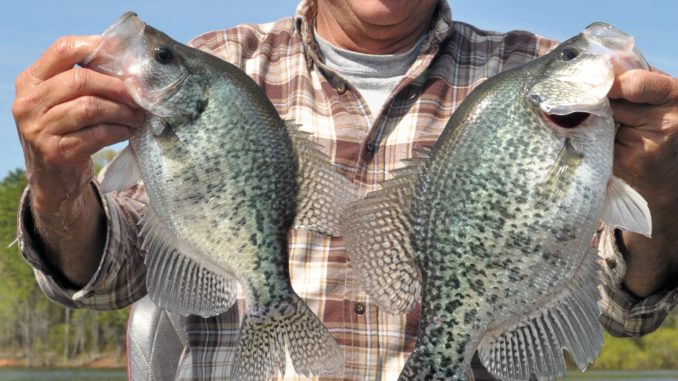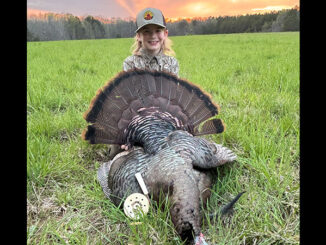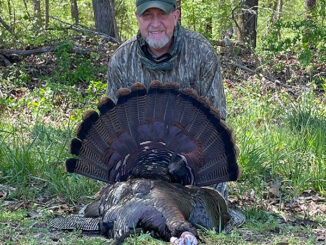
Veteran guide catching slabs around deep brush as water remains cold
Unusually cold weather notwithstanding, crappie fishermen who want to land the biggest fish of the year should consider visiting John H. Kerr Reservoir. The cool weathers haven’t negatively affected crappie fishing – it’s just delayed shallow-water April fishing while keeping March patterns intact.
Guide Bud Haynes of Clarksville, Va., one of the top slab chasers on the 49,500-acre reservoir that’s also known as “Buggs Island Lake” said cool water – in the 46- to 50-degree range – is likely to concentrate big female crappie in deep water near “trash.”
When he refers to “trash” means trees anglers have sunk in the lake to provide good structure that attracts schools of fish.
“A majority of crappies in Buggs right now are gonna be on deep structure, and they’ll be that way probably a couple weeks into April until the water warms up and pushes them toward the banks,” Haynes said. “Some crappie also will be at boat docks with ends near deep water, staging before they move to shallow water.
“I’d rather find them staging off the banks in deeper water. That’s where you usually find your biggest crappie, and they’ll be hungry.”
Although Haynes said so many trees have been sunk in the lake over the years that they’ve spread crappie out too much, Haynes has learned which trees and which docks produce the most slabs, and he can find them all.
Before the crappie move to shorelines to spawn when water temperatures reach 68 degrees, Haynes’ favorite technique is to head for a hot tree in 12 to 20 feet of water, drop an orange buoy marker on top of it, back off a few yards, then cast one of his custom-made, soft-plastic Hellgrammite lures (a 1 ½-inch-long miniature version of an adult Hellgrammite lure used for smallmouth bass fishing) at the top of the tree. He counts down to allow the lure to reach the tree top – a tree whose top is 10 feet below the surface gets 10 counts – and when he starts his retrieve, crappie often jet out of the tree’s branches and attack the lure.
Before the water warms enough to push crappie to the banks, Haynes, 66, will troll or “shoot” docks. Trolling seems to put the most fish in his boat, but dock-shooting usually lands slightly bigger crappie.
“I started trolling about 5 years ago,” he said. “It’s a good way to put a lot of fish in the boat in a short time.”




